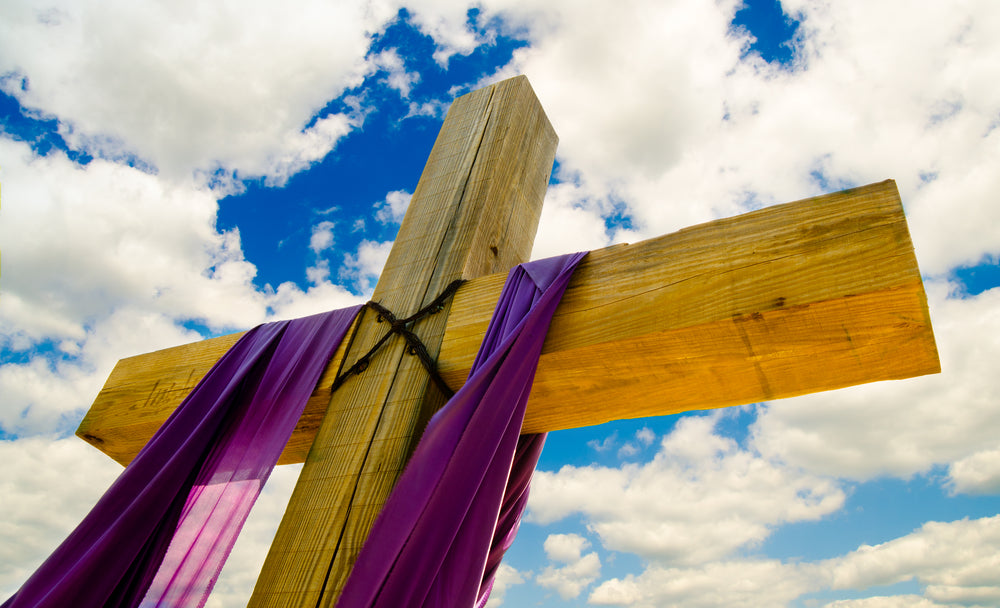
7 Interesting & Surprising Lent Facts
|
|
|
|
Lent is a period of repentance and reflection. A time to come to terms with human nature and grow in our faith through prayer, confession, fasting, and almsgiving. As Catholics, we should always be striving to learn and grow our knowledge of the Faith. There are many good reasons for this...to impress your Catholic friends at trivia, start intelligent conversations at the dinner table, defend your faith, or just to feel more ownership of your Catholic faith. Below, we offer seven facts that may surprise you about this most solemn season of the liturgical year.
Although surprising to the uninitiated, the Lenten season culminates in a holiday more important to Christians than Christmas: Easter. And while Easter is a joyous occasion for us to celebrate the Resurrection of our Lord and Savior, the season of Lent commemorates the sacrifice and suffering of Jesus Christ leading up to and including His crucifixion.
While Lent is often known as lasting 40 days and 40 nights, it’s technically 46 days in total. Why? Because Sundays aren’t considered fasting days, but rather regarded as “mini-Easters.”
But as many faithful Catholics know, 40 is a significant number in Jewish and Christian worship often used to denote a period of testing, trial, or probation. The Lenten season represents the 40 days Jesus spent fasting in the wilderness before commencing his ministry.
The word “Lent” derives from the Old English word “lenten,” which simply means “spring season.” It also might derive from the same root as “long,” a reference to the lengthening days of the season. Furthermore, it wasn’t until the 11th century that the word was embraced by the Church.
During most Ash Wednesday Masses, the priest or deacon will use ashes from palms that were blessed on the previous year’s Palm Sunday to draw a cross on worshipers’ heads.
In the early Church, those who had committed serious sins would wear sackcloth and receive ashes as a sign of public penance. Over time, this tradition was adapted for Ash Wednesday, becoming a practice for all Catholics as a sign of humility and repentance. The ashes symbolize mortality, repentance, and purification.
As the ash cross is drawn, the priest or deacon says the words, "Remember that you are dust, and to dust you shall return."
From the fifth Sunday of Lent until the beginning of the Easter Vigil, Catholic churches veil crucifixes, statues, and other religious images so as to awaken our senses and focus on the words from the Gospel. We might also view this as a symbol of our earthly life and the veiled world in which we live, in exile from our true home of Heaven, which is unveiled to us only through death.
Abstaining from meat on Ash Wednesday and Fridays in Lent is a penitential practice, although it has evolved over time. The beginning practice was to avoid eating meat from any warm-blooded animal, but now we are asked to avoid all kinds of meat altogether. Fish is an exception to this, which has led to the growth of the staple Catholic Lent fish frys.
Purple is the liturgical color of Lent. Costly to make in ancient times, purple came to be associated with kings and royalty. Before His crucifixion, soldiers clothed Jesus in a cheap robe made of “fake” purple dye intending to imply that Jesus was fake king, not knowing they were about to crucify the King of Kings.
In addition to being the color of royalty, purple is also the color of repentance for sins and symbolizes the state of our souls without the light of Christ. The color also symbolizes our mourning for Jesus’ sacrifice.
The origin of hot cross buns dates back to the 12th century, when an English monk baked spiced buns marked with a cross to honor Good Friday. The cross symbolizes Christ’s Crucifixion, while the spices represent those used to prepare His body for burial. By the 16th century, these buns became so popular that Queen Elizabeth I restricted their sale to Good Friday, Christmas, and burials.
Over time, hot cross buns became associated with Lenten traditions and folk beliefs, such as the idea that a Good Friday bun would never grow moldy. Today, they remain a beloved Holy Week tradition, enjoyed by Christians worldwide in both classic and modern variations.
Lent has many symbols whose meaning can lead to a deeper appreciation of this holy season. As we embark upon this time of reparation and repair, how will you prepare your heart to grow closer to God?
To help prepare you and your family for Lent, here are some suggested books and reflections from Catholic Home and Church: